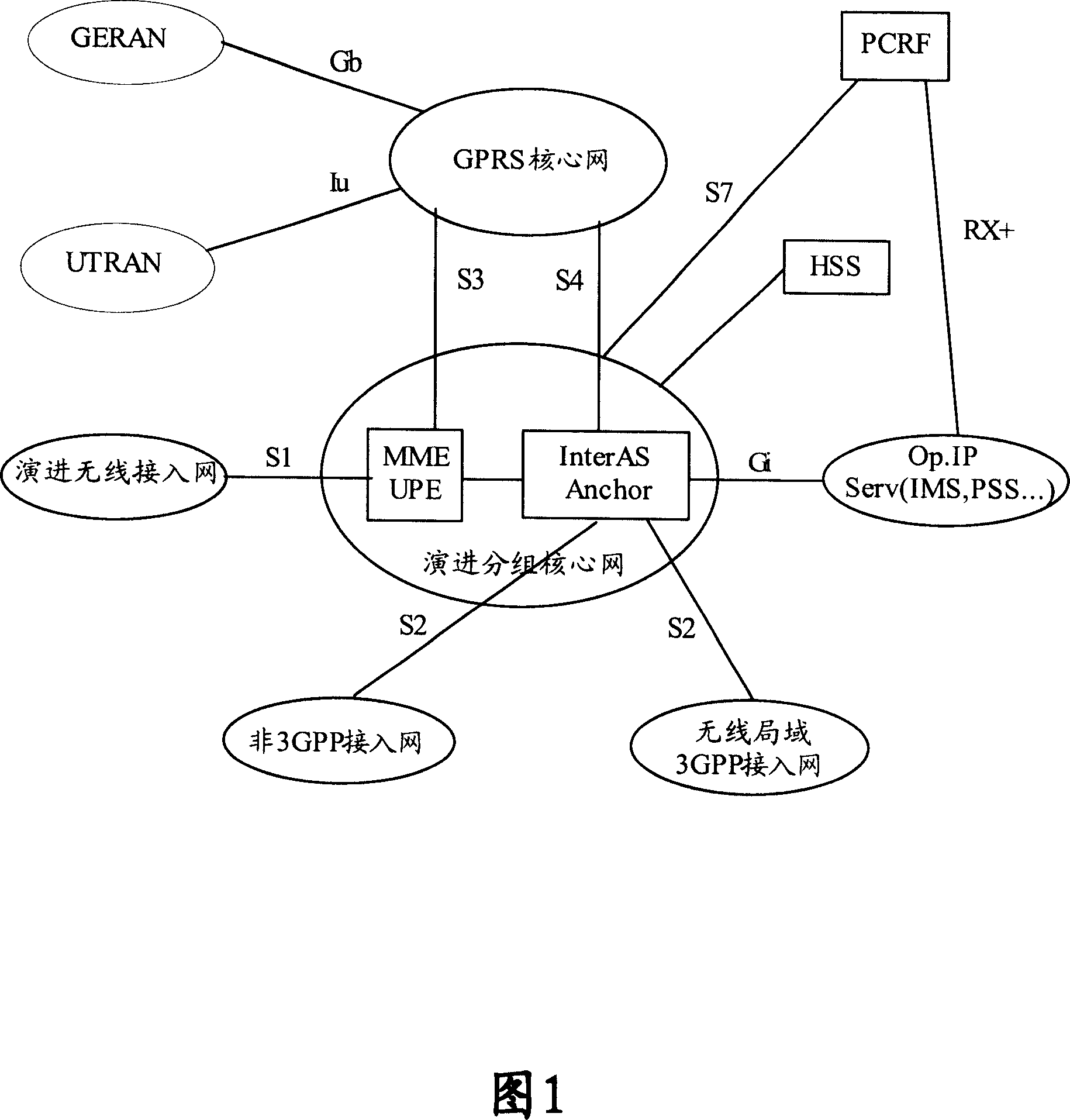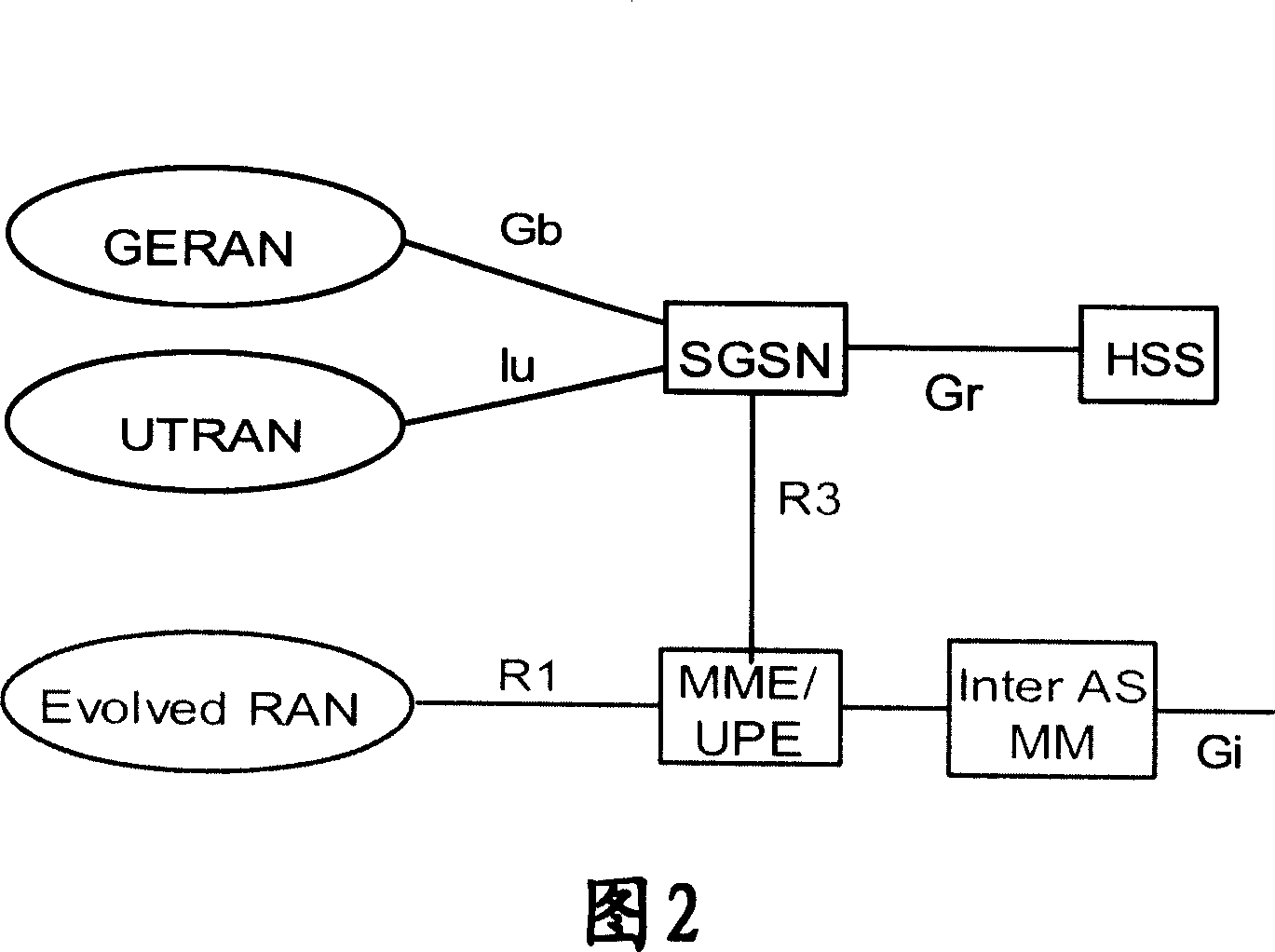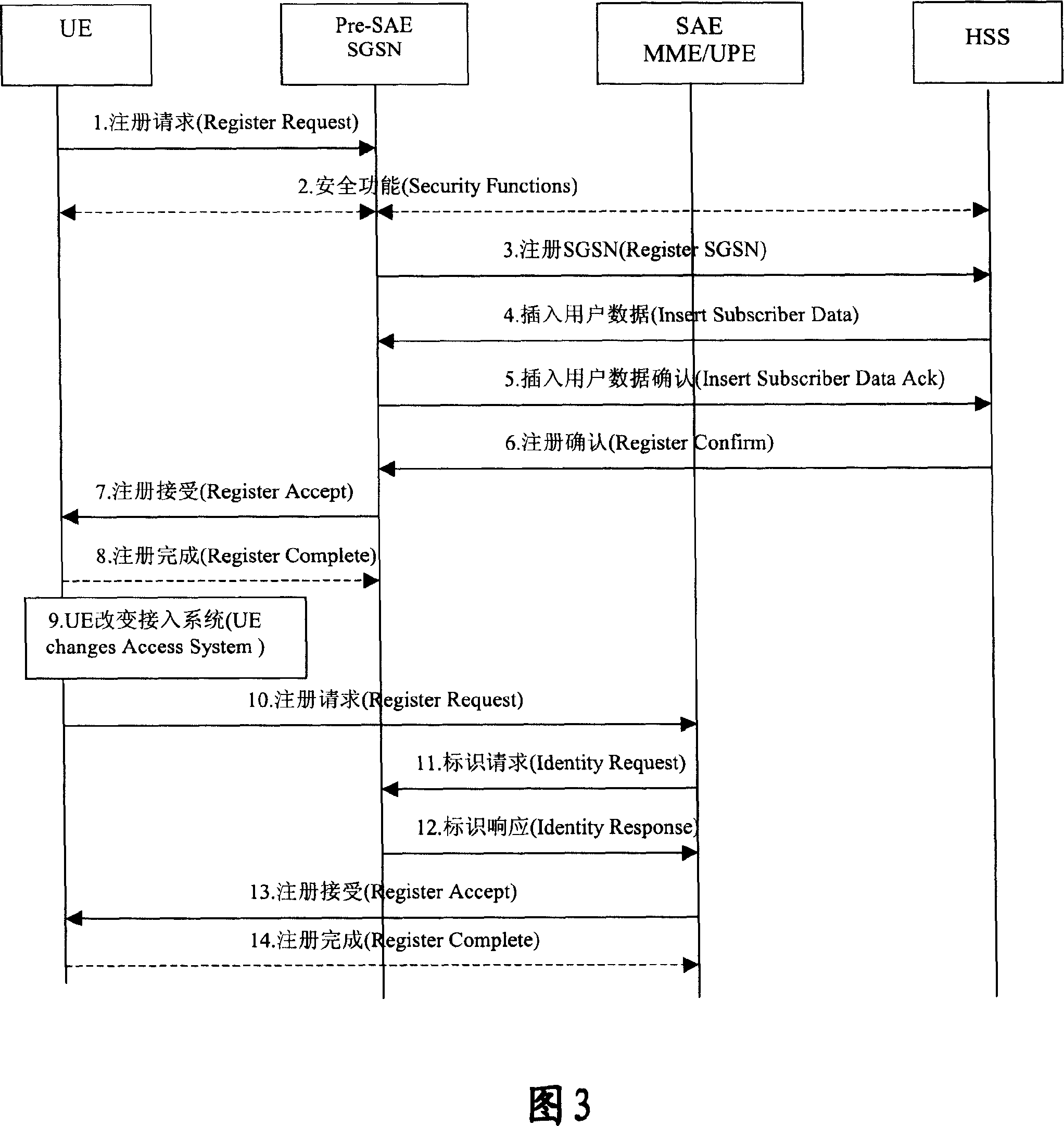Method for synchronizing user data concurrently registering two networks for mobile terminal
A user data and network technology, applied in synchronization devices, data exchange details, digital transmission systems, etc., can solve problems such as user data removal and business operation failure, and achieve the effect of ensuring correct processing and preventing removal.
- Summary
- Abstract
- Description
- Claims
- Application Information
AI Technical Summary
Problems solved by technology
Method used
Image
Examples
Embodiment 1
[0119] The SAE and the Pre-SAE each allocate a temporary mobile subscriber identity TMSI to the UE, and the registration operation can be an attach operation or a routing area update operation. Wherein, attaching (ATTACH) to two RATs (RadioAccess Type; wireless access type) is completed in one process, and routing area update (RAU: Routing Area Update) is completed in two RATs in one process.
[0120] The implicit separation and removal function is only enabled in the MME / UPE in one RAT (generally, the network element storing the main data); the implicit separation and removal function is canceled in the MME / UPE in another RAT.
[0121] As shown in Figure 5, the specific process is as follows:
[0122] Step 1, the user terminal UE discovers the access system of the wireless access network A, selects the access system of the wireless access network A, and decides to perform an attach operation or a cross-MME / UPE routing area update operation;
[0123] Step 2, the UE sends an A...
Embodiment 2
[0132] The SAE and the Pre-SAE each allocate a TMSI to the UE, and the registration operation is an attach operation or a periodic update operation. Wherein, the ATTACH to the two RATs is completed in one process; the RAU to the two RATs is completed in one process.
[0133] When the UE performs a periodic routing area update operation in radio access network A or a normal routing area update operation inside the MME / UPE, the MME / UPE of radio access network A detects that the RAT has been changed between this operation and the previous operation. technology, it is necessary to notify the MME / UPE of radio access network B to cancel the implicit detachment and clearing function, and at the same time, the MME / UPE of radio access network A starts the implicit detachment and clearing function.
[0134] As shown in Figure 6, the specific steps are as follows:
[0135] Step 1, the user terminal UE discovers the access system of the wireless access network A, and selects the access s...
Embodiment 3
[0148] The SAE and Pre-SAE each allocate a TMSI to the UE, and the registration operation can be an attach operation or a routing area update operation. Wherein, the ATTACH is completed in two processes to the two RATs; the RAU is completed in two processes in the two RATs. The first ATTACH process or the first RAU process is completed according to normal operation; in the second ATTACH process or the second RAU process, the MME / UPE of the radio access network A needs to notify the MME / UPE of the radio access network B UPE cancels implicit detach and cleanup functions. The notification message may be indicated by an identity request (Identity Request).
[0149] As shown in Figures 7A and 7B, the specific steps are as follows:
[0150] Step 1, the UE discovers the access system of the wireless access network A, selects the access system of the wireless access network A, and decides to perform an attach operation or a cross-MME / UPE routing area update operation;
[0151]Step ...
PUM
 Login to View More
Login to View More Abstract
Description
Claims
Application Information
 Login to View More
Login to View More - R&D
- Intellectual Property
- Life Sciences
- Materials
- Tech Scout
- Unparalleled Data Quality
- Higher Quality Content
- 60% Fewer Hallucinations
Browse by: Latest US Patents, China's latest patents, Technical Efficacy Thesaurus, Application Domain, Technology Topic, Popular Technical Reports.
© 2025 PatSnap. All rights reserved.Legal|Privacy policy|Modern Slavery Act Transparency Statement|Sitemap|About US| Contact US: help@patsnap.com



